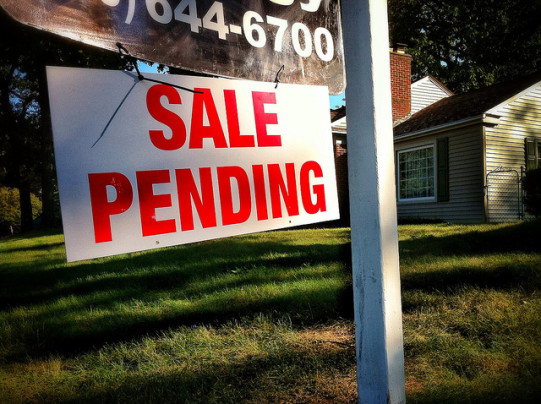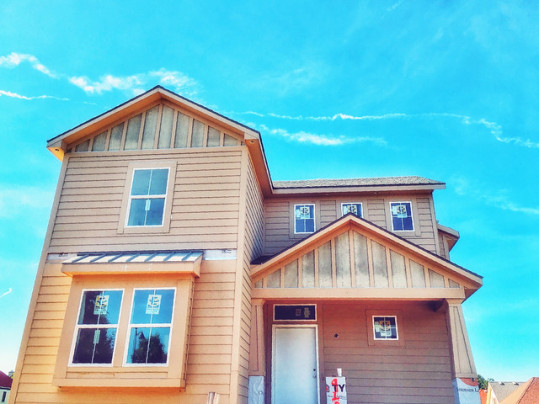The National Association of Realtors’ Pending Home Sales Index measures the number of contracts to buy homes that are signed each month. Because signed contracts proceed closings by several weeks, the index is an important housing-market indicator, as it can be a good predictor of future home sales. In December, contract signings fell from the month before but remain nearly 5 percent higher than they were one year earlier. Lawrence Yun, NAR’s chief economist, says low mortgage rates and a strong job market are helping drive interest in homeownership, though challenges remain. “Due to the shortage of affordable homes, home sales growth will only rise by around 3 percent,” Yun predicts. “Still, national median home price growth is in no danger of falling due to inventory shortages and will rise by 4 percent. The new home construction market also looks brighter, with housing starts and new home sales set to rise 6 percent and 10 percent respectively.” In other words, conditions are favorable for home buyers but a lot depends on whether or not new residential construction can keep up with the high level of demand. (source)
Archive for January 2020
Demand For Home Loans Remains Strong
According to the Mortgage Bankers Association’s Weekly Applications Survey, demand for loans to buy homes has started the year off strong and is now 17 percent higher than at the same time last year. The improvement comes after purchase activity increased 5 percent last week from the week before. Joel Kan, MBA’s associate vice president of economic and industry forecasting, says low rates and a healthy job market are the main factors driving demand. “Mortgage applications continued their strong start to the year, as borrowers acted on the drop in mortgage rates last week,” Kan said. “Rates were driven lower by investors’ increased concern about the economic impact from China’s coronavirus outbreak, in addition to existing concerns over trade and other geopolitical risks … Thanks to low rates and the healthy job market, purchase activity continues to run stronger than in 2019.” Survey results show average mortgage rates fell for 30-year fixed-rate loans with both conforming and jumbo balances, as well as 15-year fixed-rate loans. Rates for loans backed by the Federal Housing Administration, on the other hand, were up from one week earlier. The MBA’s weekly survey has been conducted since 1990 and covers 75 percent of all retail residential mortgage applications. (source)
Home Prices Increase Just 3.5% From Last Year
During the 36 years between 1968 and 2004, home prices increased every year. The average annual increase during that period was 6.4 percent. These days, home values are climbing but not as quickly. In fact, according to the most recent data from the S&P Case-Shiller Home Price Indices, prices are up just 3.5 percent year-over-year. That’s a relatively modest gain compared to the historical average. It’s also welcome news for potential home buyers concerned about affordability levels – since it means price increases have slowed from where they were just a few years ago. Still, Craig J. Lazzara, managing director and global head of index investment strategy at S&P Dow Jones Indices, says prices have risen significantly since bottoming out in 2012. “The U.S. housing market was stable in November,” Lazzara said. “With the month’s 3.5 percent increase in the national composite index, home prices are currently 59 percent above the trough reached in February 2012, and 15 percent above their pre-financial crisis peak.” Of course, how quickly prices are rising depends on where you look. For example, Phoenix, Charlotte, and Tampa saw faster gains than other cites. In those metros, home values were up between five and six percent. (source)
New Home Sales Increased 10% In 2019
New numbers from the U.S. Census Bureau and the Department of Housing and Urban Development show sales of newly built single-family homes rose 10.3 percent in 2019 over year-before levels. The improvement is good news for the housing market, as it points to rising buyer demand. But, though sales were up last year, the majority of those sales were concentrated in higher price ranges. For example, in December, just 10 percent of new home sales were homes priced below $200,000. That’s an indication that there’s still a need for more affordable new-home inventory. Currently, there’s a lack of entry level homes available for sale, which has made it more difficult for first-time buyers to enter the market. However, as more homes are built in affordable price ranges, it’ll help balance inventory levels, lower competition among buyers, and stabilize home prices. As it is, the median sales price of new homes sold in December was $331,400. The average sales price was $384,500. (source)
Average Home Seller Profit Tops $65,000
It’s no secret that home prices have been climbing in recent years. And though increases have slowed from what they were a few years ago, prices are still heading higher. That can cause affordability challenges for prospective buyers, especially those who are buying for the first time. But, for current homeowners, higher home prices are welcome news. That’s because, when home values rise, so does home equity. So just how much have recent sellers profited from the sale of their home? Well, according to ATTOM Data Solutions, home sellers nationwide realized a home price gain of $65,500 on the typical sale, which is a 13-year high and up from $58,100 the year before. Todd Teta, chief product officer at ATTOM, says 2019 was a great year to be a home seller. “The nation’s housing boom kept roaring along in 2019 as prices hit a new record, returning ever-higher profits to home sellers and posing ever-greater challenges for buyers seeking bargains,” Teta said. “In short, it was a great year to be a seller.” Profits and return on investment have improved now for eight consecutive years, though last year’s improvement was the smallest since 2011. (source)
Homes Stay On The Market For 41 Days In December
Deciding which home to buy is a big decision. The home you choose will likely be the one you live in for the next several years. So naturally, when you find one that fits your needs and lifestyle, you should take your time and weigh out all the pros and cons before making an offer. Right? Well, not exactly. These days, good homes sell quickly. In fact, according to the latest data from the National Association of Realtors, the typical home was on the market for just 41 days in December and 43 percent of homes sold in less than a month. That means, you have to act fast when you find a house you like, or you’ll risk the home being purchased by another buyer before you’ve even made an offer. This is why it’s important to be prepared, pre-approved, and aware of what your must haves and dealbreakers are. You’re less likely to make a decision you’ll regret if you’ve got everything in order and have thoroughly thought out what you want, what you don’t want, and how much you’d like to spend. (source)
Mortgage Rates Expected To Stay Low
According to the Mortgage Bankers Association’s Weekly Applications Survey, average mortgage rates were mostly flat last week, with rates for 30-year fixed-rate loans with conforming loan balances and those backed by the Federal Housing Administration seeing no change week-over-week. Rates for jumbo loans saw a slight increase, while 15-year fixed-rate loans saw rates fall to their lowest level since 2016. Joel Kan, MBA’s associate vice president of economic and industry forecasting, says demand for mortgages is up. “Mortgage applications dipped slightly last week after two weeks of healthy increases, but even with a slight decline, the total pace of applications remains at an elevated level,” Kan said. “The purchase market has started 2020 on a strong note, running 8 percent higher than the same week a year ago.” Naturally, mortgage rates hovering just above historic lows have something to do with the increased demand. Fortunately, Kan sees favorable rates continuing. “Our expectation is that rates will stay along this same narrow range,” he said. The MBA’s weekly survey has been conducted since 1990 and covers 75 percent of all retail residential mortgage applications. (source)







